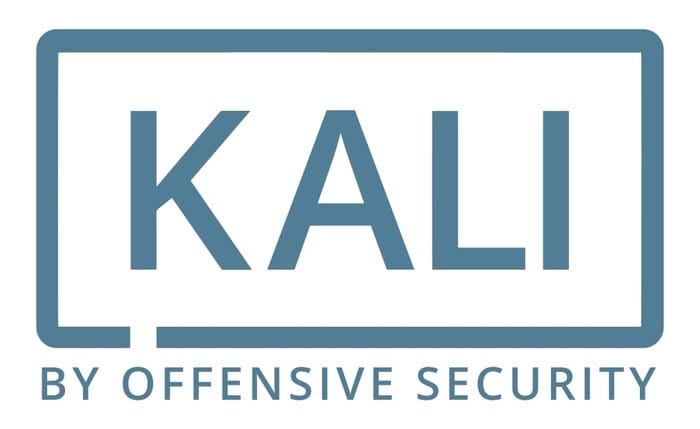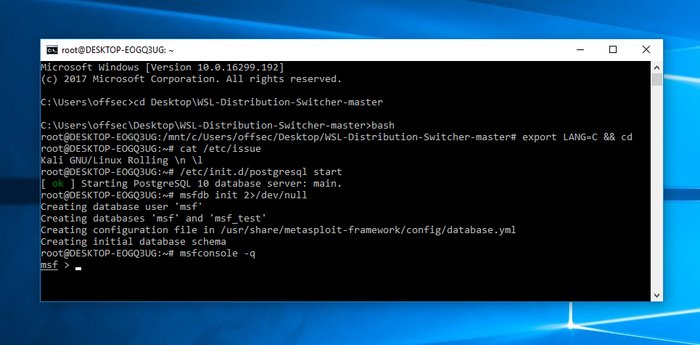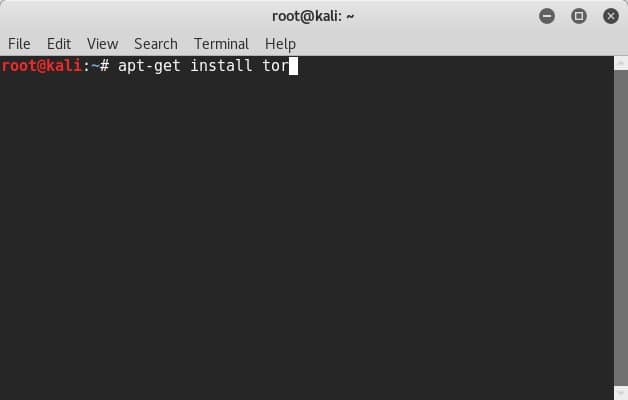Kali Linux is a sophisticated, modern-day Linux distribution aimed at penetration testers and security experts. It’s a Debian-based system developed and maintained by Offensive Security, a pioneer of the information security industry. Kali is a descendant of BackTrack, a popular but now obsolete security-focused distribution. It comes with a pre-installed set of advanced, security-focused tools such as Nmap, Aircrack-ng, and Wireshark. If you’re a security enthusiast or a starting ethical hacker, this can be the ideal platform for you. Our editors have compiled this guide outlining the 15 essential things about Kali to help you understand this OS more clearly.
Essential Facts about Kali Linux
Kali has become the de-facto platform for security professionals due to a number of reasons. It includes most of the tools required in modern penetration testing, such as tools for reconnaissance and delivering payloads. You’ll learn the basics of Kali and the reasons behind its ever-growing popularity from this guide.

1. Origin
The developers of Kali Linux created it as a replacement for the earlier BackTrack distribution. BackTrack was a powerful platform that provided the tools required for successful penetration testing and was based on Knoppix Linux.
Kali is a revamp of BackTrack built around Debian and provides a robust set of additional features. Kali is developed for providing a full-fledged Linux desktop experience, whereas BackTrack was meant to be a Live OS.
However, you can also use Kali as a live OS like other standard Linux distributions and boot it on the fly using a CD, DVD, or USB flash drive. It has been a huge success for the developers and was downloaded more than 100,000 times during its first week of release. The developers are actively working on this OS and roll out new features pretty often.
2. Target Audience
Kali offers a fully functional desktop build that anyone can use. However, it’s especially aimed at professionals who are actively working in the information security industry. Although it can be easily used by home users, our editors recommend against this since most of the tools that come with it require escalated privileges. It’s generally considered a bad idea to operate your machine as the root user unless you clearly know exactly what you are doing.
A common misconception regarding Kali is that it’s a hacking distribution. This is entirely wrong since Kali is just an OS with common security tools. Most of these tools can be installed in any traditional Linux distro and would provide the same operations.
Kali just rolls them pre-installed to help security experts save their valuable time and energy. It doesn’t provide any click-and-hack facilities. You’ll need to do this using the old-fashioned way, and the workflow would be identical in any other system.
3. Installation
You can install the Kali OS in any traditional x86, x86-64, and ARM platforms. It is an open-source distribution that offers ready-made ISO images alongside images for VMware and ARM-based devices. However, you should always download the required images from the official sources and verify the SHA256 checksums to ensure the image wasn’t tampered with. Beginners often make the mistake of downloading the ISO from third-party sources and make their system vulnerable.

Kali has a medium memory footprint and requires around 3 gigabytes of free disk space for the installation process. You can run it on legacy machines that have as low as 512MB of RAM. However, you should install it on an SSD drive and have at least 2GB RAM if you’re looking for a smooth desktop experience.
4. Release Cycle
Kali addresses some major problems related to specialized security distributions via implementing a rolling release model. This is similar to systems like Arch and Gentoo, where the system packages receive frequent updates with small differences.
This helps Kali to make sure that users always have the latest security tools alongside patching newfound bugs. Although many people tend to dislike this release model due to the seemingly unending amount of updates, it helps security professionals keep their platforms up to date.
Additionally, Kali offers development versions that combine the kali-dev-only, Debian-testing, and kali-debian-picks branches. Other versions include the kali-last-snapshot, kali-experimental, and kali-bleeding-edge branches. So, you can choose the appropriate release based on your requirements pretty easily. Take a look at this page to find out more information about specific releases.
5. Desktop Environment
GNOME was the default desktop environment for Kali Linux till last year when it was switched to XFCE. Although you can still grab a GNOME-based image, new users are encouraged to download the default one.
This new, XFCE-based environment makes a significant improvement over the last one in terms of performance and user experience. The GNOME version often hampered the experience in even modest machines. Thankfully, this has been solved successfully with the new option.

Moreover, Kali also offers KDE environments for experienced Linux users with access to beefier machines. If you’re a fan of cool applications and unlimited customization capabilities, it’s worth a try. You also get to choose from Cinnamon, MATE, and the LXDE environment. So Kali certainly covers this ground pretty well.
6. Package Management
Kali uses the Debian-based package manager dpkg. So you can easily install new applications that offer a .deb executable. Installing packages that do not provide a .deb file can be tricky for new users. However, they’ll still be able to compile the packages from source using standard Linux development tools like make and install.
You can install RPM files using tools like “alien” that convert the RPM package into a DEB one. The apt command allows users to search and install their favorite Linux packages directly from the terminal. Graphical software like the Synaptic Package Manager is also available as in other distributions.
We always recommend installing a stable version of Kali if they want uninterrupted package updates without configuration hassles. However, you should never add unofficial sources to your /etc/apt/sources.list file, and else you may easily mess up your system. Both Debian and Kali recommend this to users.
7. Drivers and Firmware
One noted drawback of Kali Linux is that it falls significantly short on supporting drivers and firmware. Although the developers are always trying to roll support for newer drivers, it’s proven to be a hard job. One notable problem users face recurring issues with wireless drivers. Sometimes you may even need to install specific firmware to get around issues with incompatible drivers.
You may also face problems with GPU drivers. Although Kali developers try to support commercial Nvidia cards, you will often encounter compatibility issues. However, since Kali’s target users are penetration testers and security experts, they often don’t require GPU supports at all. But if you’re a gamer, it can be seriously frustrating sometimes.
8. Windows Compatibility
Although it’s hard to find actual penetration testers using Windows as their primary system, many people would be happy to access Kali tools and features from their Windows workstation. Thankfully, the newly developed WSL(Windows Subsystem for Linux) enables users to do exactly this. This is a compatibility layer for Windows, allowing users to run Linux executables directly from their Windows 10 system.

Kali provides good support for this layer and allows professionals to use applications installed in Kali over WSL. You can find some excellent pieces of documentation that will walk you through the environment configurations from their website. However, you should bear in mind that you might blow up some of Kali’s advanced functionality by using this feature. But it’s a working solution for people who really need it.
9. Virtualization Support
Virtualization is the method of using virtual platforms for running high-demanding computer services. Kali’s virtualization support includes the ability to reside inside Linux virtual machines, pre-built ISO images for VMware, VirtualBox, Hyper-V, and Vagrant alongside support for containerization platforms Docker and LXC. So, you can install Kali Linux in any standard platform that relies on virtualization without facing additional hassles.
VMware is certainly the best choice for professionals working with high-performance systems. Kali offers excellent support for open-vm-tools (OVT) alongside other essential applications. Moreover, the availability of official images for Docker and LXC saves significant time for security professionals.
10. Embedded & Android Support
As discussed earlier, Kali supports a wide variety of ARM-based embedded devices such as Raspberry Pie, Beaglebone, Odroid, HP & Samsung Chromebook, among many more. Admins can choose from a number of lightweight images to set up simple but Kali platforms.
Moreover, support for new embedded devices is increasing every day. So you can easily set up a low-cost Kali system that allows you to do all your security-related works from remote locations or the comfort of your home.
Additionally, Kali now supports the Android operating system through the Linux Deploy app and the Kali Linux NetHunter ROM. It’s a custom Android overlay built on top of the ASOP project and provides a versatile set of Kali features and security tools.
11. Privacy & Animosity
Kali is very quiet by design. This is one of the primary reasons why security experts use this instead of traditional Linux distributions. Standard distributions usually send network packets over the network at a regular interval and may have several unmonitored services running on different ports. Thus, they are prone to network scans and lose the animosity craved by security professionals and malicious users.

Experts can also rely on Kali’s advanced encryption methods to keep their machines and data secure. You can even encrypt your bootable Kali OS if you want. So overall, Kali is an excellent choice for both security researchers and privacy-concerned users.
12. Customization
Although most Linux distributions are extremely customizable, Kali takes this to a whole new level. It allows us to build personalized systems by changing the source and creating custom ISOs. You can choose only to keep the packages required by your job out of the 600 plus available security tools that Kali has to offer. We’ve already gone over the desktop environments, which allow users to create personalized user experiences very easily.
You’ll also have the authority to rebuild source packages, Kali Linux kernels and preparing custom Kali ARM chroot. The Kali website has some excellent documentation to help developers get started with their customization efforts. You can also find additional tools and resources for learning advanced modification methods.
13. Documentation
Good documentation is essential for specialized Linux distributions like Kali. Thankfully, the developers know this and provide some excellent resources that contain detailed information about the essential topics. We really liked how these resources are created and can confidently say that it’ll help you learn Kali much faster.
Additionally, there are a plethora of video tutorials as well as Kali cookbooks from reputed publications that teach many complex features of Kali. If you’re a seasoned security professional looking to master advanced Kali functionalities, you can easily do so by consulting some of these resources.
14. Community Support
Kali has a thriving community filled with security experts who are always willing to help people with their problems. The development of these communities dates back to BackTrack and offers excellent advice on starting penetration testers. The Offensive Security team maintains the official Kali website, blog, forums, IRC channels, Git repository, and bug tracker for Kali alongside social media feeds like Twitter and Facebook.
We strongly suggest you consult the community members whenever you’re stuck on a problem. Whether the problem arises from incompatible hardware or system misconfiguration, you’re very likely to get expert answers based on facts. Simply be modest and tell them how the problem occurred and what steps you’ve tried to solve them. You’ll get a working solution even before you know.
15. Special Features
Kali offers a great list of additional features absent in traditional Linux distributions. The ISO of Doom is an excellent example of a special Kali feature. It’s an advanced recipe for building custom images that can install themselves automatically, reverse VPM auto-connections, and create network bridges, among others.

The multi-level live USB persistence allows users to create bootable Kali drives with support for multiple encrypted profiles. The Kali meta-package collection offers tools for quickly building minimized system environments. Users can also set up cloud versions of Kali in the Amazon Elastic Compute Cloud using the Amazon EC2 AWS images. Some other notable features include accessibility for blind or visually impaired users and the bootable forensic mode.
Ending Thoughts
Kali Linux is known for its vast collection of security tools as well as a privacy-focused feature set. If you want to learn penetration testing from scratch, it can be the ideal companion for you. Moreover, seasoned, ethical hackers can leverage Kali to perform faster security audits.
You can also grab lucrative CS jobs that deal with security if you’re proficient in Kali or have a professional Kali certification. Our editors have outlined the 15 essential information for Kali beginners to help them kickstart their adventure. Hopefully, you’ve learned a bit or two from this guide. Don’t forget to leave us your feedback in the comment section.

Thank you, great info and great article. Please note, there is a *stark* difference between the word “animosity” used incorrectly in this article, and “anonymity”, what you meant to use.
Great content. This can serve as the perfect intro to people interested in kali. Thanks for detailed info
Thanks for this article, which I suppose was aimed to use Kali Linux in an absolute responsible manner. However, I found Kali having the most suitable and nicest UI with its utmost graphics possibilities, easy to handle as a daily computing tool. I understand that it was not developed for that purpose, but I hope it can still be used for simple computing if someone stays away entirely from the blocks intended for penetration testing.
I am a beginner in Linux and started to deal with it three years ago when I was 62. Since then I tried more than 25 distros and my favourite is Kali Linux.
Yes I’ve also used Kali for more than a year as my standard environment. Once you resolve some minor configuration issues, it provides a near perfect graphical experience. Thanks for your comment!